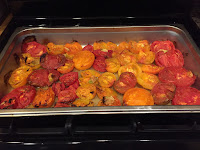Preserve What You Can Eat
One of the most rewarding ways to utilize your pumpkins is by preserving them for future meals. Fresh pumpkin can be roasted, pureed, or made into soups, pies, and other delicious dishes. If you have leftover pumpkin flesh, consider freezing it in portions. Just scoop out the insides, blend, and store in airtight containers or freezer bags.
However, be cautious: only use pumpkins that are fresh and free from mold or decay. Moldy or unsafe pumpkins can pose health risks, so ensure that any pumpkin you plan to eat is in good condition before using it.
Composting Fun
Feed Our Animal Friends
Consider donating your pumpkins to local farms or animal sanctuaries. Pigs, goats, and chickens relish pumpkin as a tasty and nutritious treat. Myth buster: There’s a common misconception that feeding animals pumpkin will make them sick. However, as long as the pumpkins are fresh and mold-free, they can be a healthy snack for livestock.
Get Crafty
Before you toss out your seasonal decor, think about how you can upcycle those pumpkins! Transform them into charming planters, candle holders, or fun bird feeders. Hollow out the pumpkins, carve a design, and fill them with soil and seeds. Myth-buster: Some believe that you can’t plant pumpkin seeds after Halloween. Not true! You can clean and dry the seeds from your pumpkins and plant them next year.
Recycling
Boise residents are encouraged to place their pumpkins in their compost carts this season. The city’s Compost Facility appreciates pumpkins during this time, as the extra moisture and nutrients help break down leaves. Check with your local waste management or agricultural offices for recycling efforts available in your area.
Natural Decorations
To maintain the cozy fall ambiance, consider using natural decorations like dried flowers or pinecones that can also be composted later. These elements enhance your home’s warmth without adding to landfill waste.
By embracing these creative solutions for leftover pumpkins and fall decor, you not only reduce waste but also enhance your culinary and gardening experiences. So, before you toss that pumpkin, remember: every gourd deserves a second chance!









.png)
.png)











.png)








